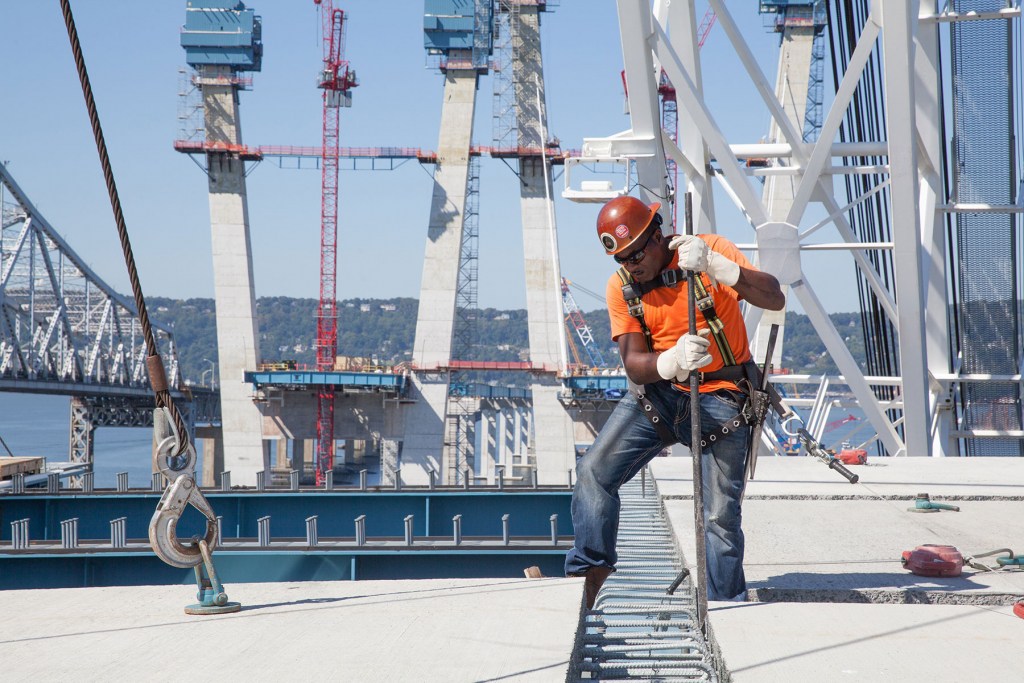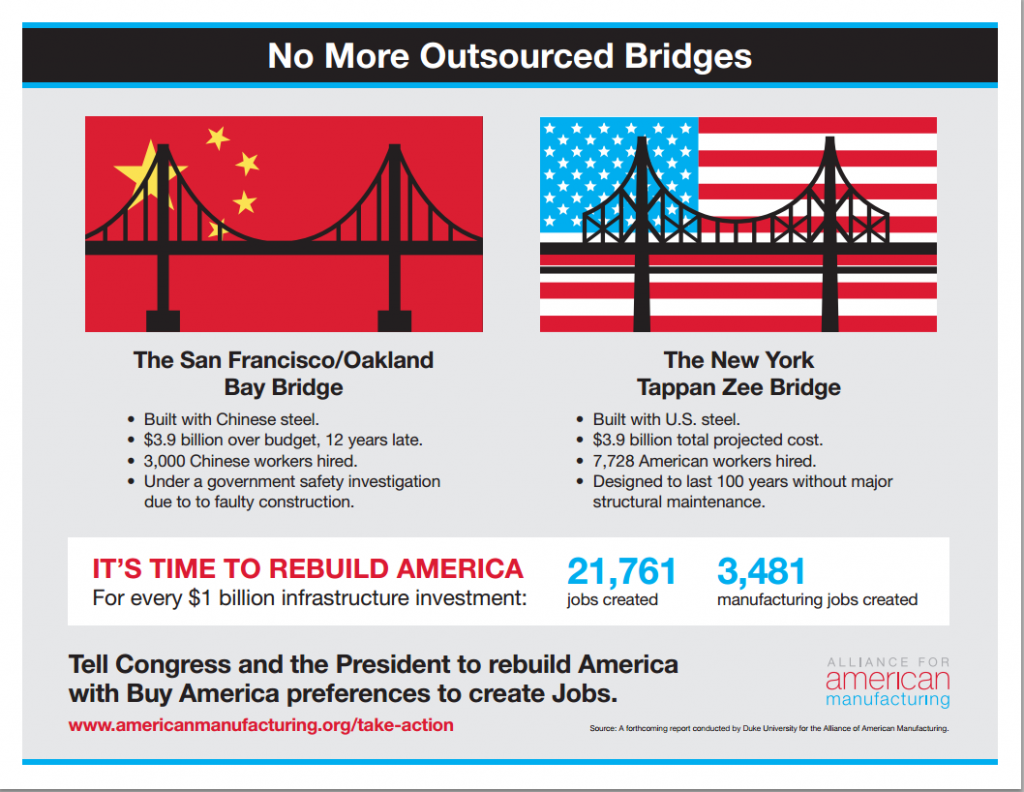
A new report makes the case for investment & the candidates are talking about it. Let’s do it right.
The National Association of Manufacturers (NAM) recently released “Building to Win,” a report making the case for infrastructure investment. NAM’s report early on sets the tone:
Great nations build and invest in great infrastructure. The Reason is simple: When people are better connected, when communities have greater access to economic opportunities and when manufacturers have efficient ways to move goods to market, the quality of life rises, productivity soars, and societies thrive. Current U.S. infrastructure, however, is in an alarming state of disrepair and in urgent need of strong investments.
We couldn’t agree more with NAM in terms of calling for solutions to the current state of our infrastructure. Working with the Duke University Center on Globalization, Governance, and Competiveness, AAM produced a report of our own in 2014 that highlighted the urgent need for infrastructure investment.
But we also stressed an issue not covered in the NAM report: ensuring that our infrastructure is constructed with American-made steel, iron, and other manufactured products.
Infrastructure investment has the potential to create millions of new jobs. Maximizing American-made materials when rebuilding infrastructure will create even more jobs here in the United States.
Relying on American-made inputs can also mitigate safety concerns related to large-scale outsourcing. Projects subject to federal Buy America preferences mitigate the safety risks of using potentially inferior-quality foreign inputs while also delivering more economic benefits to the U.S. economy than outsourced projects.
Significant unanticipated risks to bridge safety and massive project delays may result from outsourcing large sections of steel fabrication abroad, especially when contractors are not able to execute proper governance.
We can look to the San Francisco-Oakland Bay Bridge for proof of this. California officials, led by then-Gov. Arnold Schwarzenegger, opted out of Buy America coverage and instead bought steel from China, which meant the outsourcing of 27 percent of the funds used to build the bridge. Officials said it was done to save money, but the quality of the steel produced was so poor that there were big project delays and cost overruns. In the end, it came in $3.9 billion over budget and 12 years late.
There are still questions about the safety of the bridge.
Contrast that to the Tappan Zee Bridge, which will be 100 percent American-made, including all of the steel used in its construction. It is scheduled to open in 2018, with a $3.9 billion total cost and is designed to last 100 years without any structural maintenance. Thousands of American workers were hired for the project.

Maintaining a Competitive Edge
American steelworkers and companies have the capacity and capability to competitively deliver on large infrastructure products needing high quality steel and iron.
Federal investment in transportation infrastructure can drive employment and boost our national competitiveness. Increased investment in transportation infrastructure will provide jobs in many sectors, including in construction and manufacturing, while addressing the long-term deficiencies in the state of U.S. infrastructure.
Businesses depend on a state-of-the-art transportation infrastructure to efficiently transport necessary components and final goods to their destinations. A safe, world-class transportation infrastructure can create new jobs through greater efficiency, increased competitiveness, and more overall demand.
NAM’s report echoes many of these concerns, and while infrastructure investment has been prominent among the presidential candidates, it seems some in Congress still need convincing.
While speaking to The Economic Club of New York in September, Speaker Paul Ryan (R-Wis.) suggested that now may not be the best time for a huge infrastructure spending plan:
"…we passed the biggest highway bill, the long-term highway bill, for the first time since the 1990s just a few months ago.… So that's already in place and 10 percent above baseline spending on mass transit and highways. So I would suggest that that's occurring now."
As we pointed out in our 2014 report, which concurs with NAM’s findings, the status quo funding has not kept pace with growth and needs. That 10 percent boost above baseline spending isn’t going to make a dent in the $900 billion backlog that continues to grow because deterioration of our infrastructure continues to outpace investment. Underinvestment reduces the ability of U.S. companies to get goods to market and has left the United States ranking at No. 16 overall in global competitiveness, as we continue to fall behind our top trading partners.
With each passing day, our infrastructure deficit deepens – and the cost of bringing existing assets back to adequate condition grow larger and more difficult to tackle. Investing in infrastructure is not just practical, but an employment and a national competiveness issue.
But we also want to remind our colleagues at NAM that the benefits to America’s manufacturing sector would be much more significant with the application of strong Buy America preferences, as it will allow us to maximize the benefits for American workers. We can’t put off building our infrastructure any longer.
